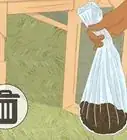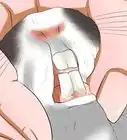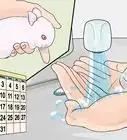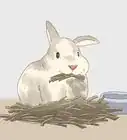This article was co-authored by Ryan Corrigan, LVT, VTS-EVN. Ryan Corrigan is a Licensed Veterinary Technician in California. She received her Bachelor of Science in Veterinary Technology from Purdue University in 2010. She is also a Member of the Academy of Equine Veterinary Nursing Technicians since 2011.
This article has been viewed 21,785 times.
As rabbits groom themselves via licking, sometimes balls of hair can get stuck in their intestines. This can cause hair blockages, which are marked by symptoms like gas pain, weight loss, and lethargy. Take your rabbit to the vet for evaluation and form a treatment plan from there. While it's stressful to deal with an animal's health issues, hair blockages can be successfully treated.
Steps
Watching for Symptoms
-
1Watch for signs of gas pain. Gas is generally one of the first and most obvious symptoms of a hair blockage. A rabbit that's experiencing pain due to gas often hunches over in its cage and presses its belly to the floor. It may grind its teeth. You may also hear gurgling coming from a rabbit's stomach.[1]
-
2Pay attention to your rabbit's bowel movements. Changes in bowel movements are an early sign of a hair blockage. Usually, rabbits with a hair blockage will stop having bowel movements altogether. If you notice an absence of droppings in your rabbit's cage, this should be evaluated by a vet immediately.[2]Advertisement
-
3Monitor your rabbit's eating habits. Changes in eating habits can indicate a wide variety of health concerns, including a hair blockage. With a hair blockage, rabbits may eat more pellets, cereals, and grains over fresh produce. They might also eat paper or wood to get more fiber. You may notice your rabbit running through pellets quickly if it has a hair blockage.[3]
- In some cases, the rabbit may stop eating or decrease how much it eats if it has a hair blockage.
-
4Notice your rabbit's activity level. Changes in your rabbit's normal activity level usually indicate sickness. Decreased activity is an early sign of a blockage. Your rabbit may spend more time in the corner of its cage and be uninterested in socializing or playing. Your rabbit may sleep more and be more still than normal.[4]
-
5Take note of unusual weight loss. Weight loss is a sign of many different illnesses in rabbits. If you notice other symptoms of a hair blockage and your rabbit appears to be losing weight, this may indicate a hair blockage is to blame.[5]
- Keep in mind, unusual weight loss is a common symptom of many illnesses. Even when not accompanied by other symptoms, weight loss should be evaluated by a vet.
Seeking Veterinary Care
-
1Take your rabbit to the vet immediately. Hair blockages are very treatable with prompt action. Therefore, it's important to make an appointment with your vet as soon as you notice symptoms. The sooner you start treatment, the better the prognosis.[6]
- If you don't already have a vet, look online or in the yellow pages for a vet in your area with experience treating rabbits.
-
2Have your vet confirm a hair blockage. Once you bring your rabbit to the vet, they will conduct tests to confirm a hair blockage diagnosis. Sometimes, a physical examination is all that is necessary. However, it is common for x-rays or radiographs of the stomach to be taken as well.[7]
-
3Let your vet administer fluid therapy. The initial treatment for hair blockages is usually fluid therapy. Your vet will intravenously inject your rabbit with fluids. This can help replenish lost fluids and may loosen the blockage in your rabbit's stomach.[8]
-
4Have your vet administer a stomach massage. A stomach massage may also be necessary to treat a hair blockage. Massaging the stomach can help dislodge hair and loosen the blockage, allowing your rabbit to pass it on its own.[9]
- Do not attempt to massage your rabbit's stomach on your own. Your vet will perform a specific type of medical massage that should only be done by a professional.
Caring for Your Rabbit at Home
-
1Make sure your rabbit eats. After a hair blockage, rabbits may have difficulty eating. Keep your rabbit in a familiar and quiet spot in your home. Make food easier to eat by chopping it up. Provide your rabbit's favorite food to encourage it to eat. Also, provide extra green, leafy vegetables. Extra fiber helps your rabbit pass the hair blockage.[10]
- Talk to your vet about your rabbit's diet. They may prescribe a special diet depending on your rabbit's current health.
- In some cases, hair blockages are caused by a lack of fiber in the rabbit's diet. If your vet thinks this is the case, they may ask you to increase the fiber you feed your rabbit.
-
2Encourage your rabbit to move. Moving around can help your rabbit pass the blockage, so gently encourage your rabbit to get some exercise. Once your rabbit is well enough to move around, encourage this.[11]
- Let your rabbit out of the cage and try to get it to play with its favorite toys.
- If you ever walk your rabbit on a harness, take it for short walks.
- However, do not do too much too soon. Limit activity to a few minutes of exercise with rest in between.
-
3Keep your rabbit warm. A hair blockage can cause a lower temperature, so make sure to keep your rabbit warm at home. You can hold your rabbit for an hour at a time, using your own body heat to warm it up. Also, be sure to provide warm bedding and keep your rabbit in a warm area of your home.[12]
- You can put clean clothing or towels in the dryer to warm them up. Once they are done, take them out and drape them over your rabbit.
- You can also fill water bottles with warm (but not hot) water. Place these in the cage, and your rabbit will huddle next to them when it is cold.
- Avoid using heating pads, as these are a fire hazard and can cause burns.
-
4Give your rabbit any prescribed medications. Your vet may prescribe pain relievers or antibiotics. If your vet wants you to administer medications, make sure to give your rabbit the full round of meds, even after symptoms have passed. Talk to your vet about the proper dosages and how to correctly administer medication.[13]
-
5See a vet again if problems persist. Usually, a hair blockage will pass with time and symptoms will stop. If symptoms do not stop after a few days, see a vet. A vet may want to check for other issues or suggest additional medications to treat the blockage.[14]
- In some cases, the vet may recommend dental care and teeth filing to help prevent blockages.
References
- ↑ https://www.petfinder.com/pet-care/rabbit-care/rabbit-sick-reach-vet/
- ↑ http://www.rabbit.org/chapters/se-pennsylvania/GIStasis.htm
- ↑ http://www.petmd.com/rabbit/conditions/digestive/c_rb_trichobezoars
- ↑ http://www.petmd.com/rabbit/conditions/digestive/c_rb_trichobezoars
- ↑ http://www.petmd.com/rabbit/conditions/digestive/c_rb_trichobezoars
- ↑ http://www.petmd.com/rabbit/conditions/digestive/c_rb_trichobezoars?page=2
- ↑ http://www.rabbit.org/chapters/se-pennsylvania/GIStasis.htm
- ↑ http://www.petmd.com/rabbit/conditions/digestive/c_rb_trichobezoars?page=2
- ↑ http://www.petmd.com/rabbit/conditions/digestive/c_rb_trichobezoars?page=2
- ↑ http://www.rabbit.org/chapters/se-pennsylvania/GIStasis.htm
- ↑ http://www.petmd.com/rabbit/conditions/digestive/c_rb_trichobezoars?page=2
- ↑ https://www.petfinder.com/pet-care/rabbit-care/rabbit-sick-reach-vet/
- ↑ http://www.petmd.com/rabbit/conditions/digestive/c_rb_trichobezoars?page=2
- ↑ http://www.petmd.com/rabbit/conditions/digestive/c_rb_trichobezoars?page=2
About This Article
If you suspect your rabbit has an intestinal hair blockage, first check for signs of gas pain. For example, your rabbit may press its belly to the floor of the cage or grind its teeth. You might also notice that your rabbit leaves fewer droppings than usual, or that it stops having bowel movements altogether. Additionally, watch for changes in your rabbit’s eating habits, such as eating more pellets or other sources of fiber, like paper or wood. In some cases, a rabbit with a blockage may stop eating. Finally, look out for lethargy and unexplained weight loss. For advice from our Veterinarian co-author on how to get a hair blockage diagnosed and treated, read on!
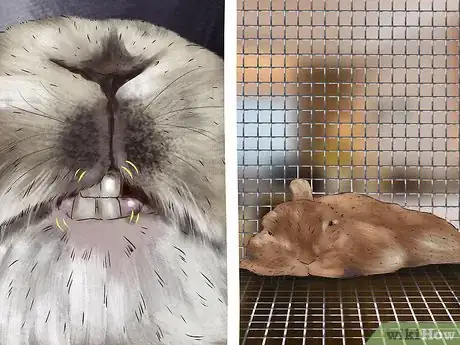
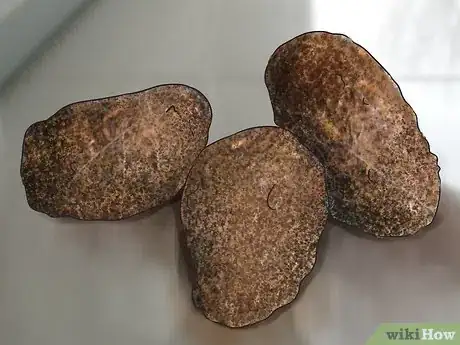
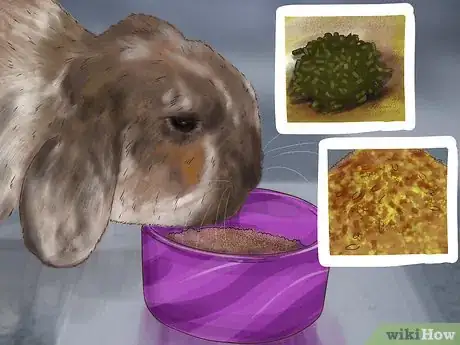
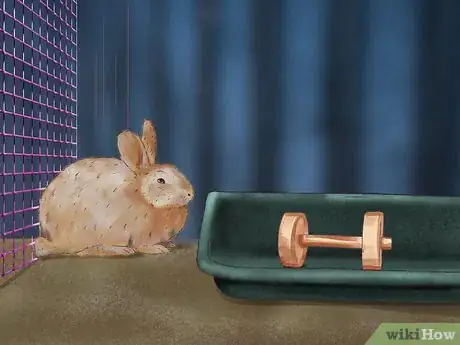

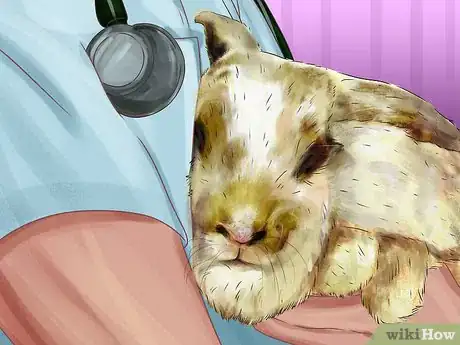
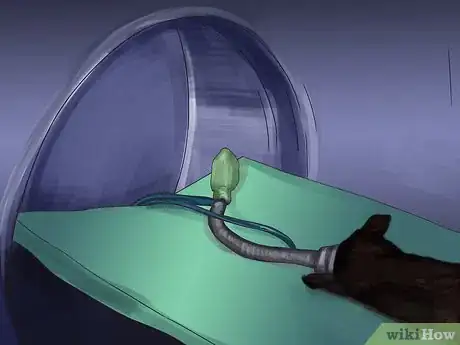

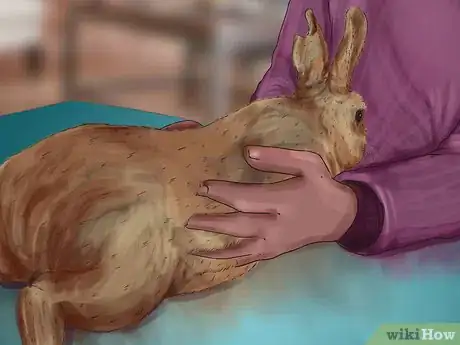

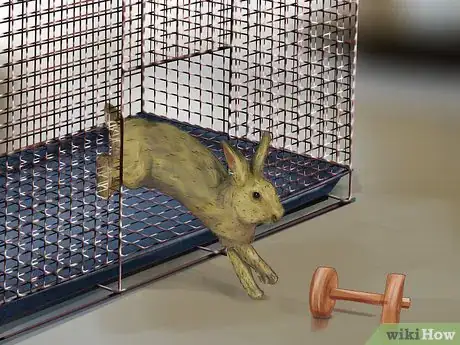

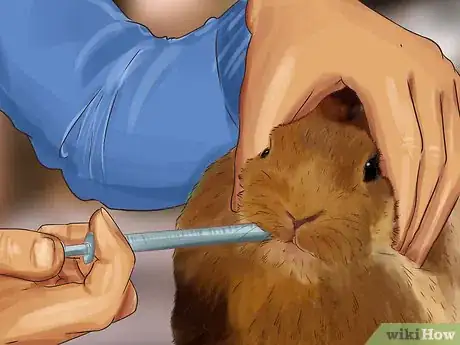
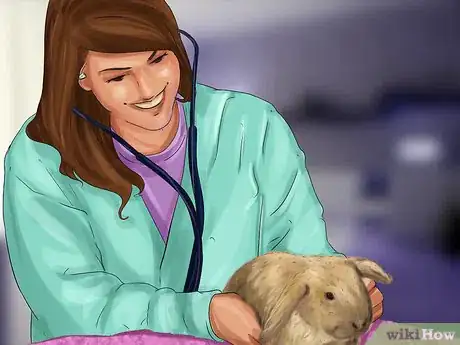
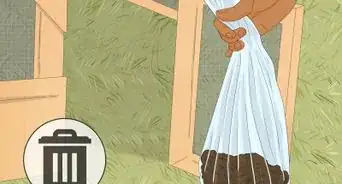
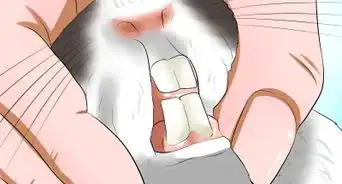
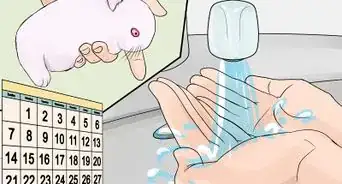
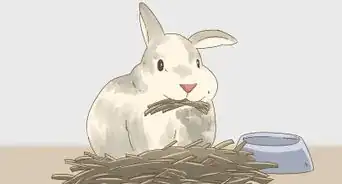
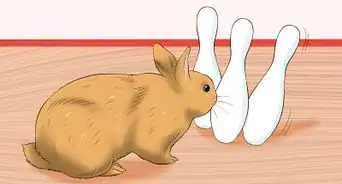
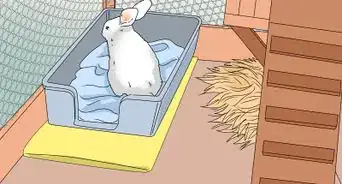
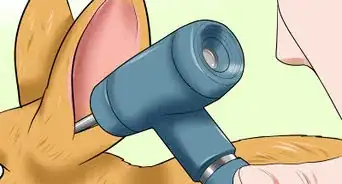
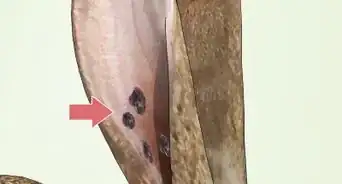
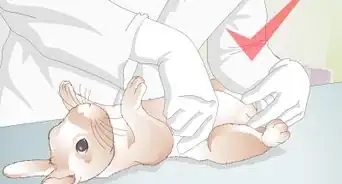
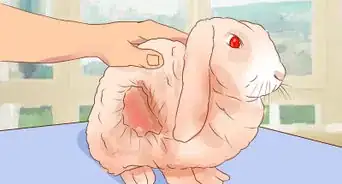
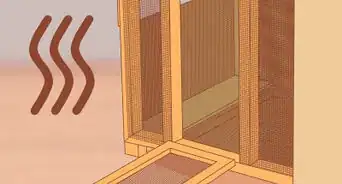

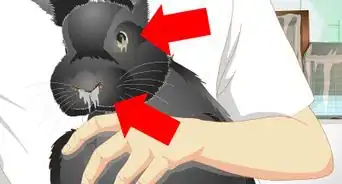
-in-Rabbits-Step-12.webp)







